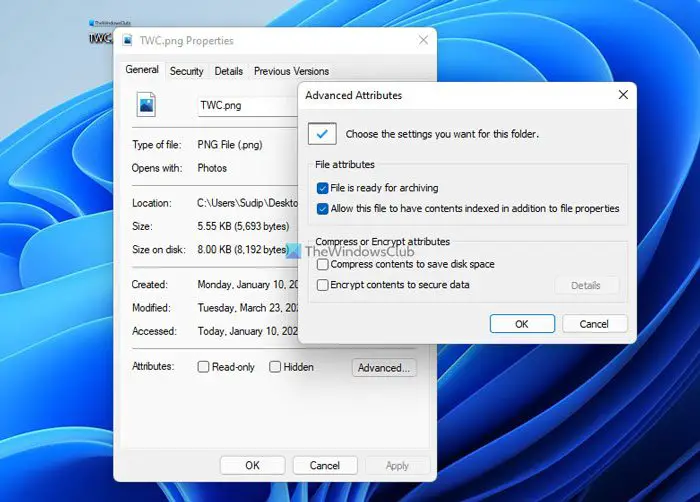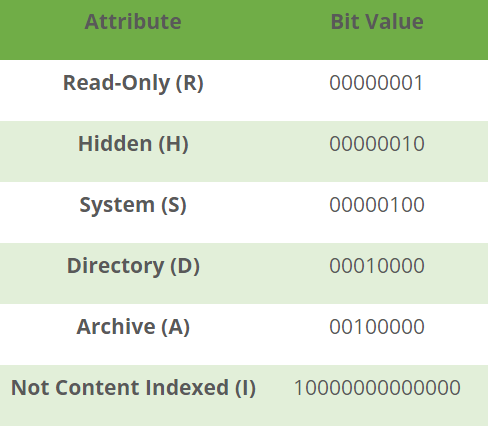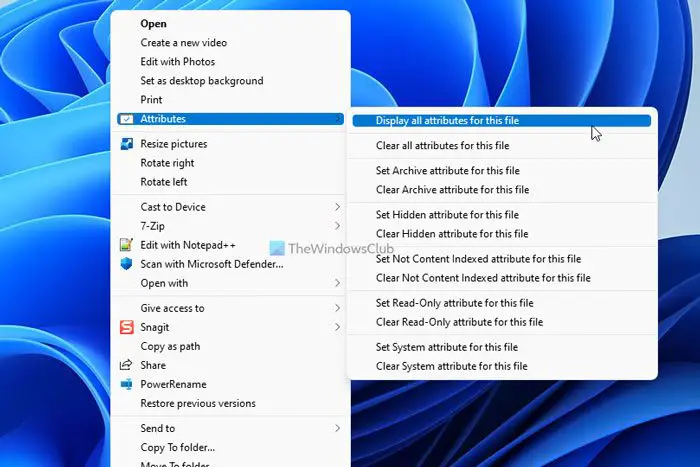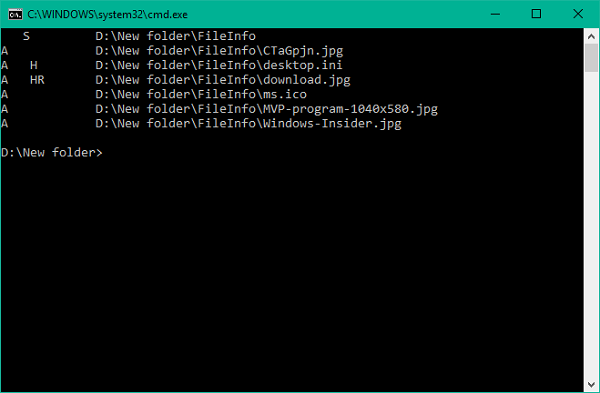Sometimes you might receive an error while trying to change and save the contents of a Read-only text file and you never realize it until the text editor itself reminds you that you don’t have permissions to edit the file contents. During such instances, you might wonder, how does Windows 11/10/8/7 differentiate between a system file, hidden file or whether it is a Read-only file. Well, this happens due to File Attributes.

What are File Attributes in Windows
Each file in Windows contains some metadata associated with it which determines the general system behavior of that file. These are called File attributes, and they impart information about the file itself. These attributes have only two possible values – set or cleared. These are like a flag that can be turned On/Off.
We have seen how you can change File Attributes using attrib.exe and taken a look at Attribute Changer freeware that lets you do so in a click. Today, we’re going to take a look at how to add these file attributes to the standard context menu so that you can easily manipulate any file by setting or clearing off its attributes.
Add File Attributes option to Context menu
You should be signed in as an Administrator for adding these file attribute options to the right-click context menu and make it accessible for all the users on your PC. Also, one more important thing to note here is that you’ll not be able to set/clear the attributes of a file/folder until you’re an Owner of it. So play along with only those files for which you’re having Owner permissions.
Below is the list of commonly used file attributes and their corresponding bit value.
Commonly used File Attributes in Windows

Let’s take a brief look at what each attribute means:
Read-Only (R): This attribute will prevent other users or programs from making any permanent changes to a file. It comes in handy if you want to set a file as write-protected. However, this flag does not ensure that the file will not be deleted.
Hidden (H): Any file/folder which has this attribute set will be hidden from the normal view. It will only be visible if you bypass the system settings and chose to display all hidden files and folders.
System (S): Setting this attribute ON for any file will make it a system file which can not be modified or deleted. This is how the Operating System configuration files are secured.
Directory (D): Just like LINUX, this attribute is used to differentiate the folders and sub-folders from the files.
Archive (A): This attribute is used to help effectively manage backup and archival of the files. Whenever any changes are made to a backed-up file, this attribute is set to ON so that the backup software can identify such modified files by analyzing their Archive attribute. This helps in taking the ‘incremental backup’ of any intended file.
Not Content Indexed (I): If you want any file not to appear the results while using Windows Search functionality, you can set this attribute ON for the file in question. Once set, the file will be skipped when the operating system will search for any content.
Add Set/Clear options for File attributes in Context Menu
We have created a Registry Editor Entry File (.REG) file to help you easily add the file attribute option to context menu where you can easily set/clear off the individual attributes for any file/folder. If you would want to remove these options from the context menu in the future, use the other REG file that removes these registry entries made earlier.
Just download this zip file, extract its contents and run the appropriate one with Administrator privileges to add/remove the registry entries. Now, for accessing these options from the context menu, just right-click the desired file/folder and navigate to Attributes menu item in there. Select the option from sub-menu for your intended operation.

Selecting any option from the sub-menu would launch a Command Prompt window for the execution of the underlying command.
Below is an example image where I have displayed all attributes for a folder, its subfolder and files as well. A CMD window popped-up displaying all the attributes for the folder.

How do I add items to Windows 11 context menu?
There are mainly two ways to add items to the context menu in Windows 11/10 – using third–party software and manually. There are tons of free context menu editors available for Windows 11/10. For example, you can use Ultimate Windows Customizer, ContextEdit, ShellExtView or ShellMenuView, etc.
How to show more options in File Explorer context menu in Windows 11?
There are two ways to show more options in the File Explorer context menu in Windows 11. First, you can right-click and select the Show more options in the context menu. Second, you can use the keyboard shortcut – Shift+F10.
Hope it works for you!
See this post if you receive The Extended Attributes Are Inconsistent error in Windows 11/10.
Leave a Reply